Painting doors? Proper preparation, the right tools and materials and good technique result in a silky-smooth, long-lasting finish. Use these pro tips to make an old door look new again.
Great Tips for Painting Doors
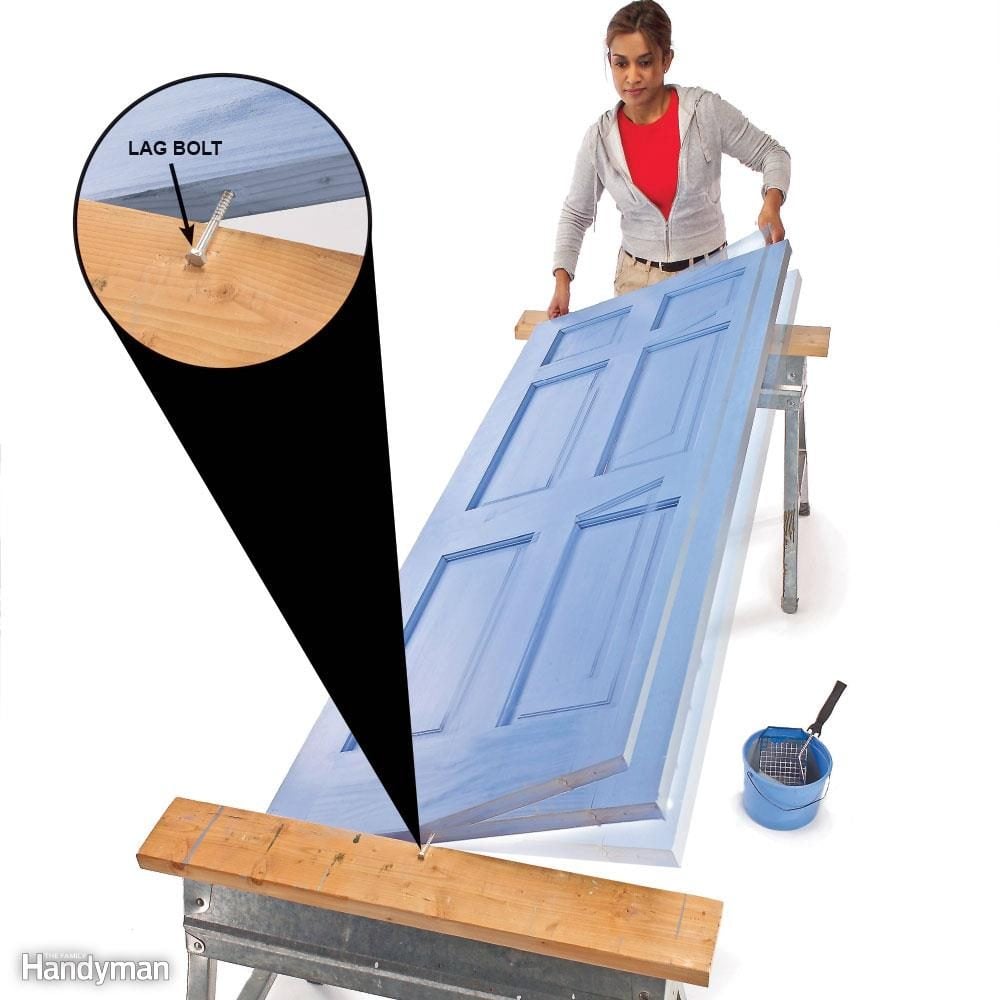
Lay the door flat to avoid drips and runs
For convenience, it's tempting to leave a door hanging on its hinges when you paint. But for a smooth finish, you have to lay it flat and remove the hinges, knobs and other hardware. With the door laid flat on sawhorses, you can spread paint more quickly and not worry about drips and paint sags. And you can still paint both sides in a day if you rest the door on lag screws.
Drill one 3/16-in. hole in the bottom of the door and two at the top, then turn 4-in. by 1/4-in. lag screws 1-1/2 in. into the door. Spread the sawhorses apart just enough so that the door doesn't touch either side but rests entirely on the bolts. Paint the first side, then just rotate the door on the single bolt at the bottom of the door while holding the other two bolts.
However, if you do want to paint a door without removing it, it’s certainly possible.
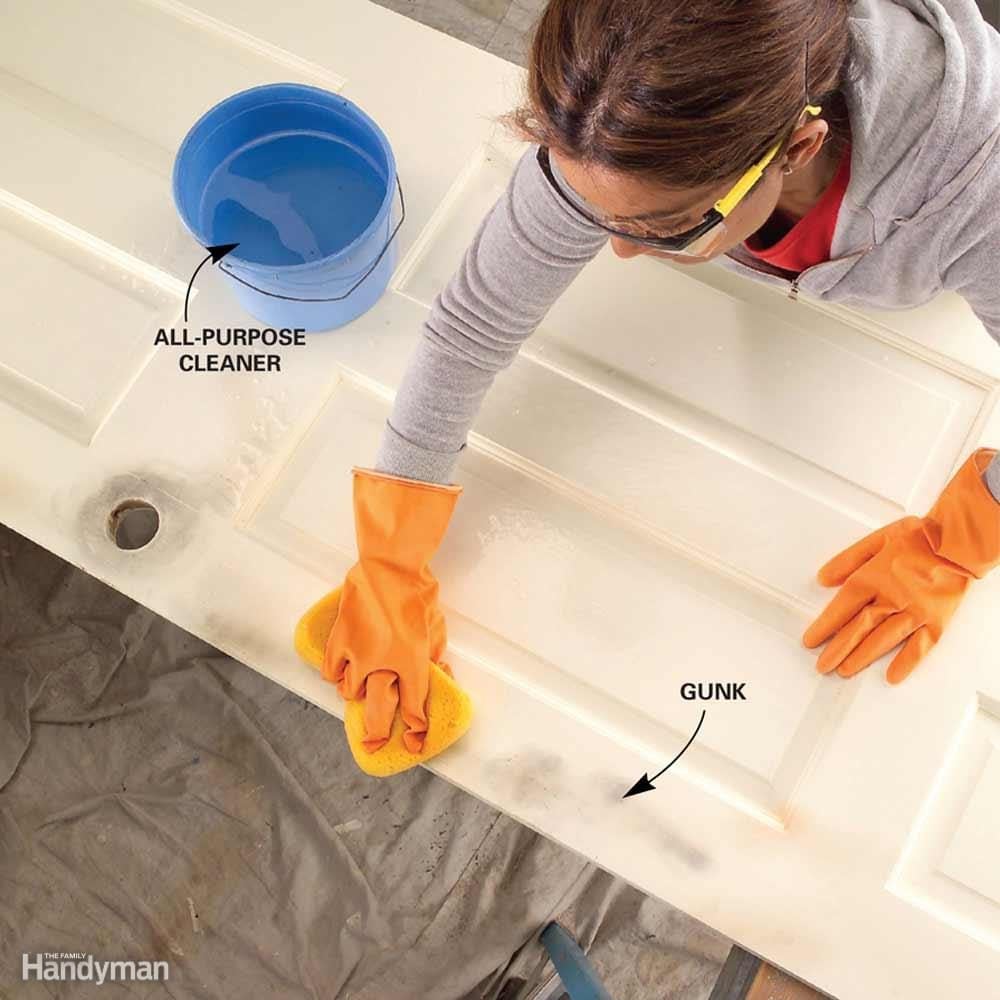
Clean Off Grime Before You Prime
Washing your old finish is probably the most important step you can take to ensure good paint adhesion. Even the best paint won't stick well to oil and dirt, and there's lots of both on doors, especially near the knob, where dirty hands have pushed and pulled for years. Before filling holes or priming, scrub the entire door with heavy-duty household cleaner. Let the door dry completely, then fill any holes.
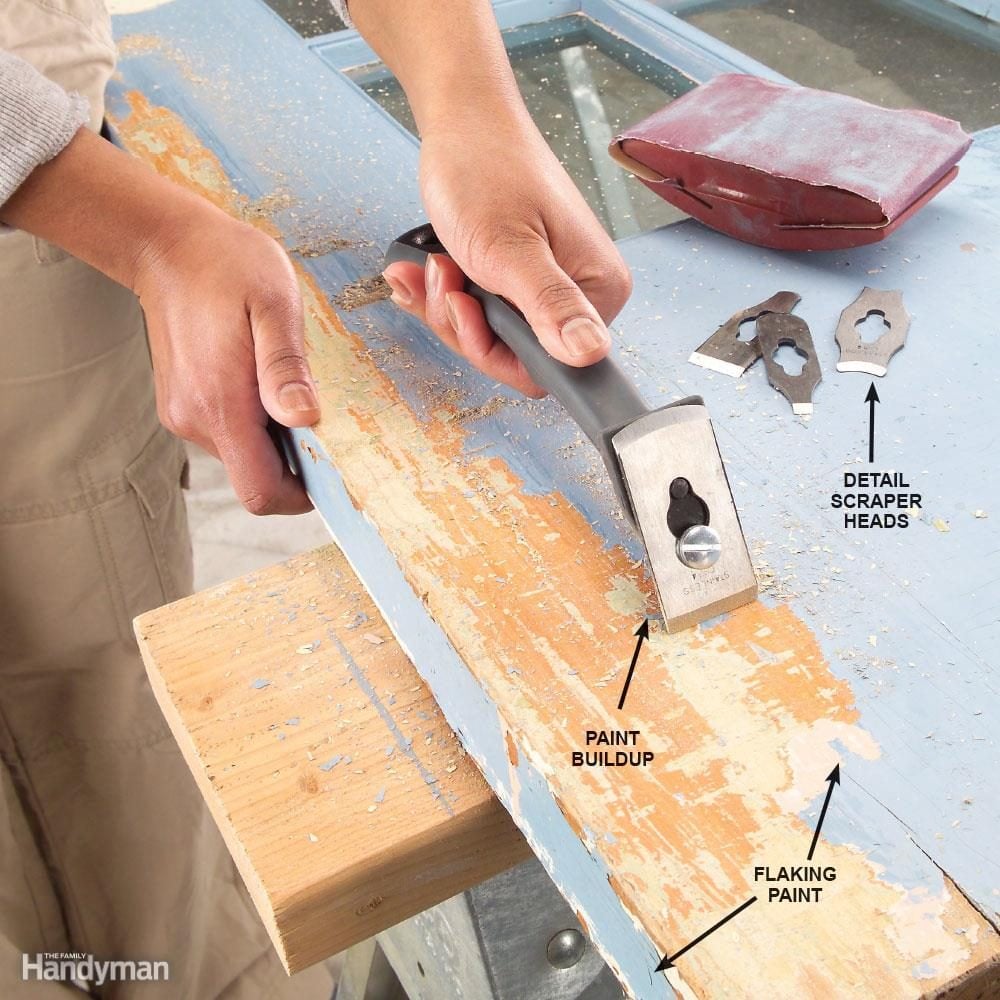
Beware of paint buildup
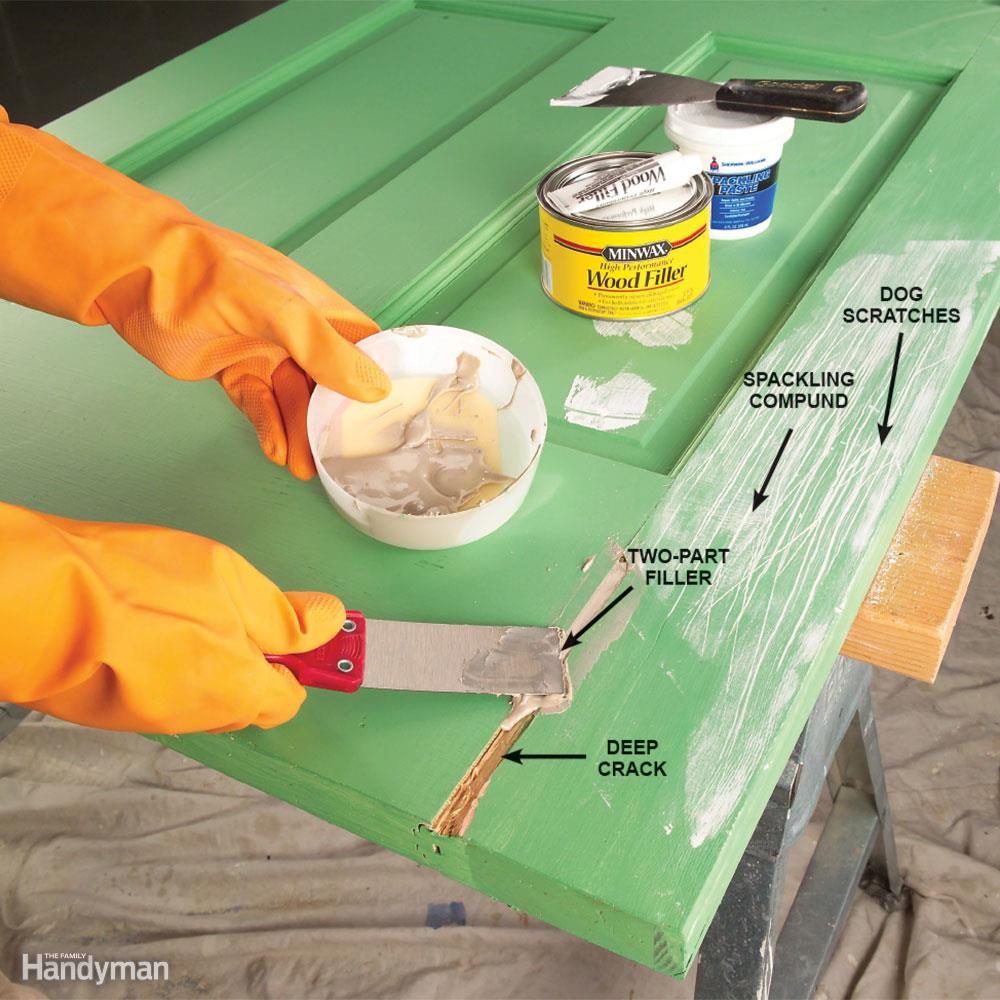
Fill all holes, even small ones
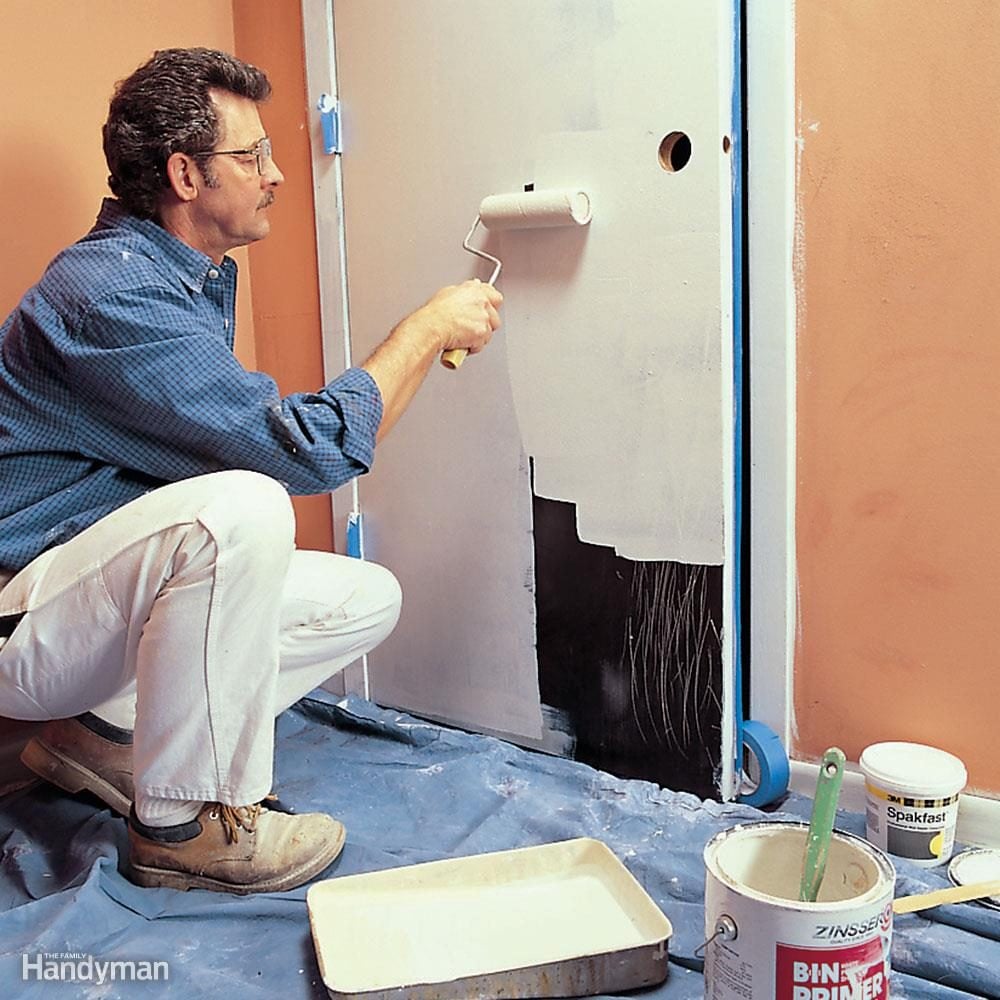
Prime the entire door before painting
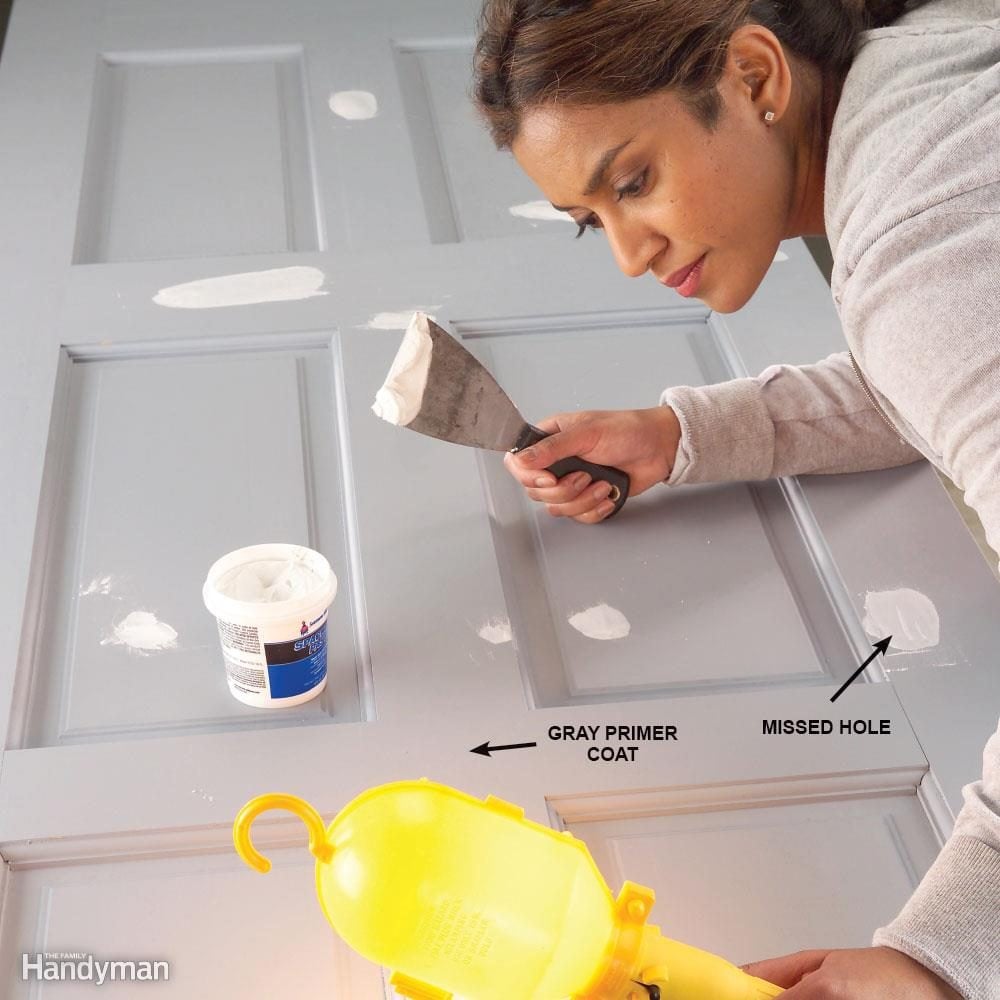
Search for flaws after priming
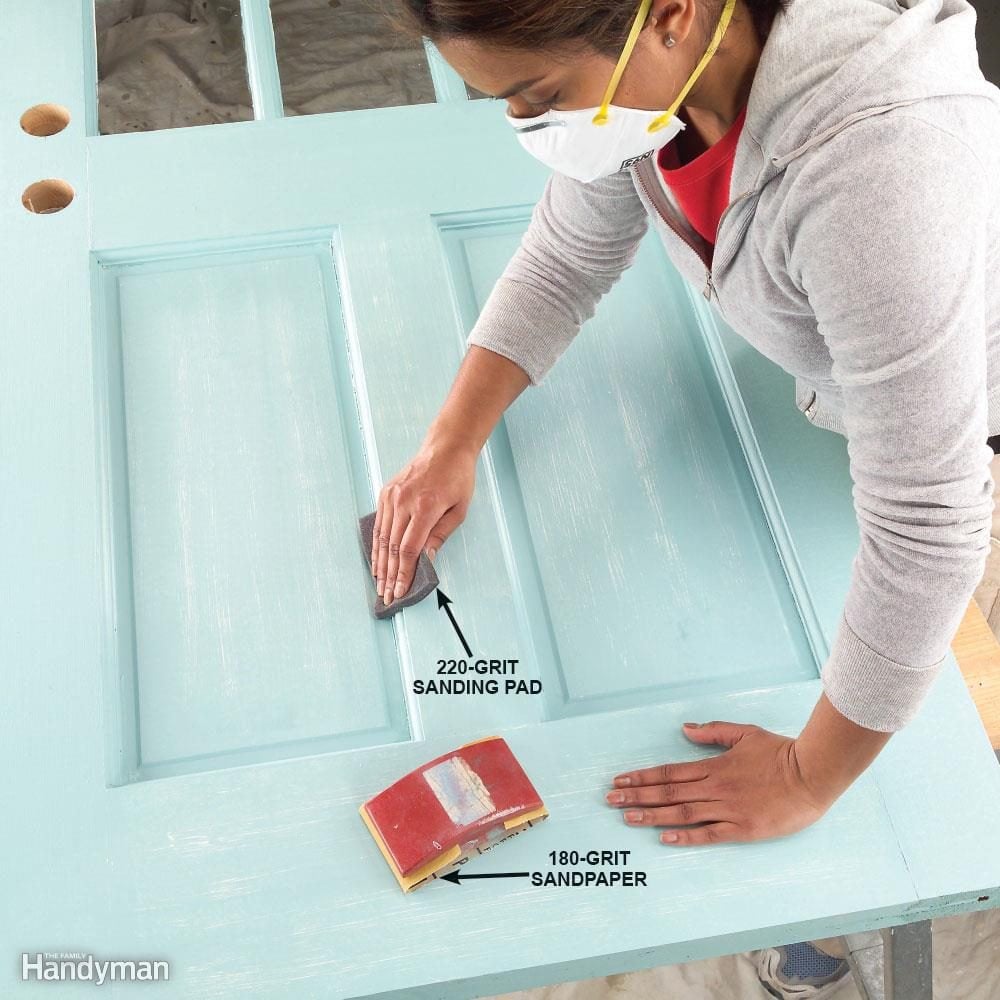
Sand between coats
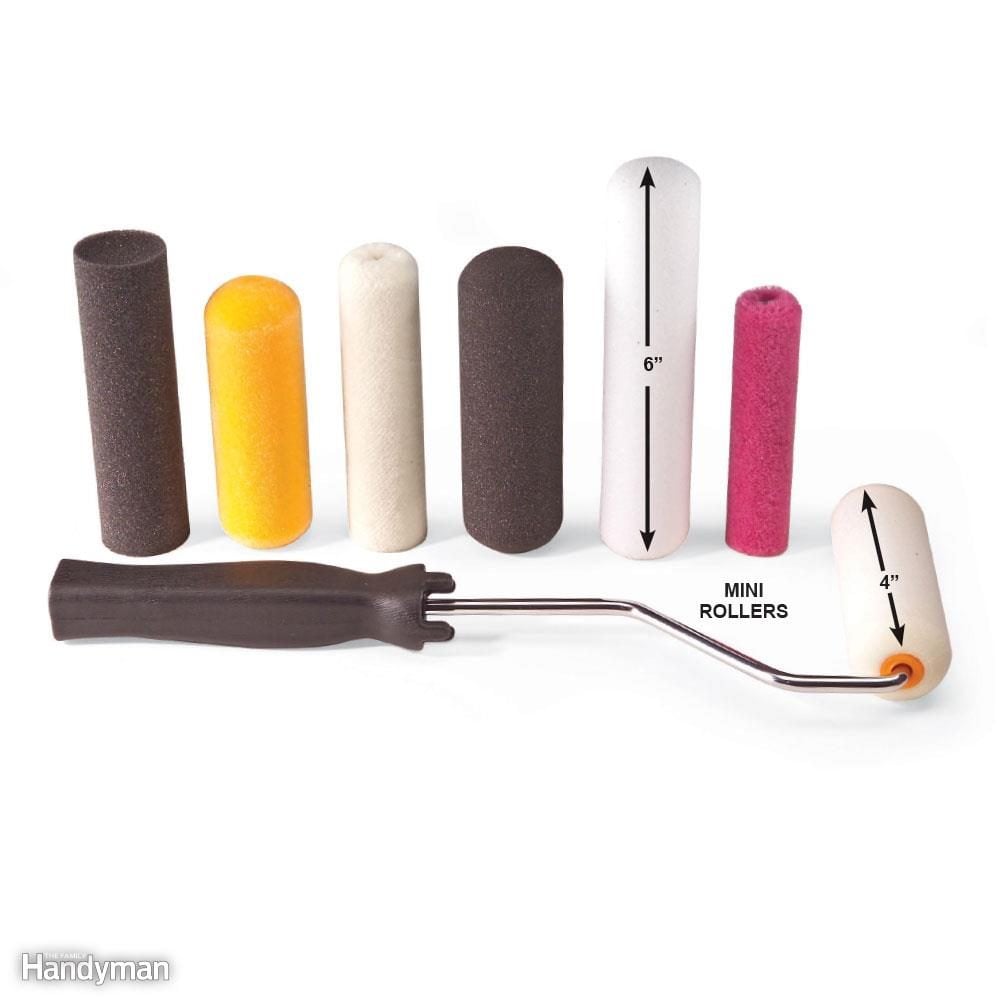
Get a smoother finish with a special mini roller
The best way to avoid brush marks is to avoid using brushes. High-density foam mini rollers spread paint smoothly and evenly, without brush marks and without the bumpy surface that standard-nap rollers leave. They also have rounded ends that almost eliminate lap marks and let you paint into corners without leaving scrapes or ridges.
Edge in around windows and panels with a brush first, then coat the rest of the door with the foam roller. Use the rollers for both primer and paint. They spread a thinner coat of paint than brushes or conventional rollers do, so you'll need at least two coats. Foam rollers are available at paint stores and home centers.
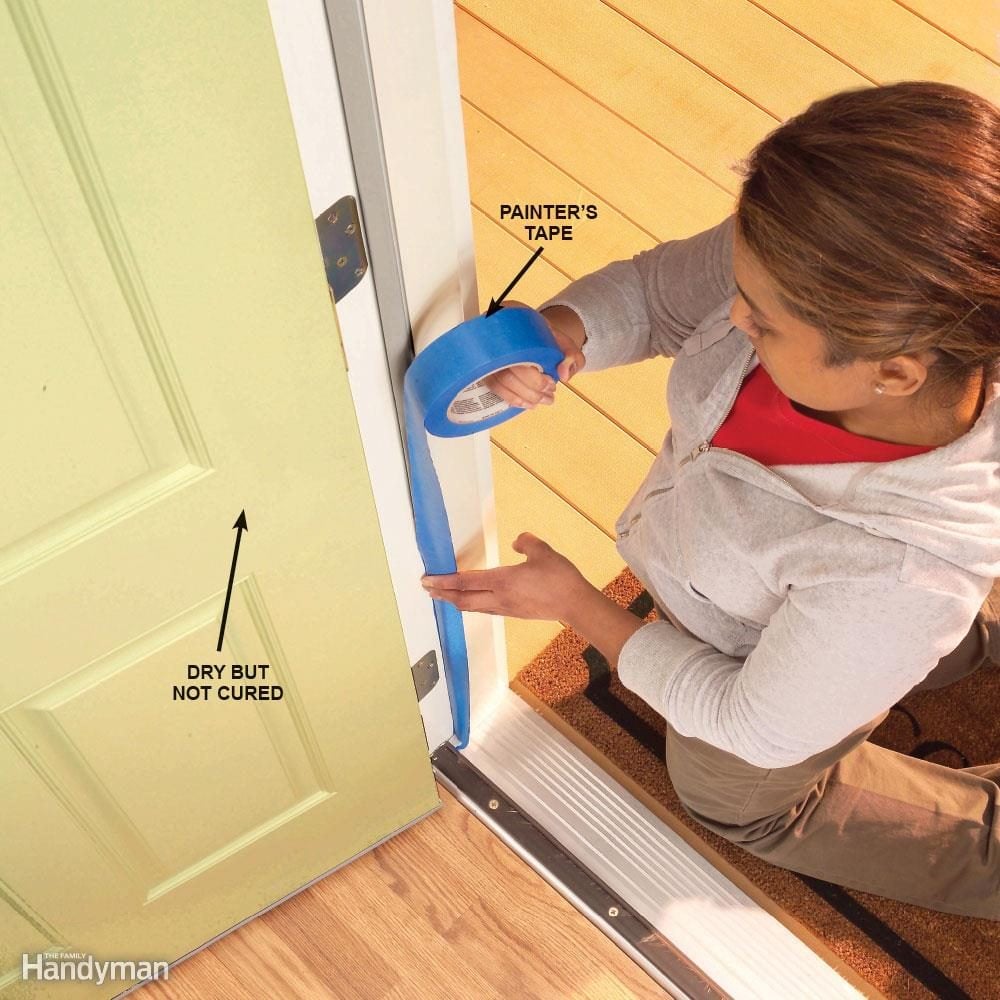
Protect freshly painted doors from sticking
It's difficult to know how soon to put a door back up again after painting. And for home security, you'll want to get exterior doors back up as soon as possible. But even when latex paint is dry to the touch, it can still stick to the doorstop or weather stripping and then peel off when you open the door.
To be safe, wait at least two days before closing an interior door. This is especially true during humid conditions, when it takes longer for paint to cure properly. With an exterior door, either remove the weather stripping or cover it with painter's tape so the paint won't stick.
After you’re done with that, check out the video below to see how to trim a door.